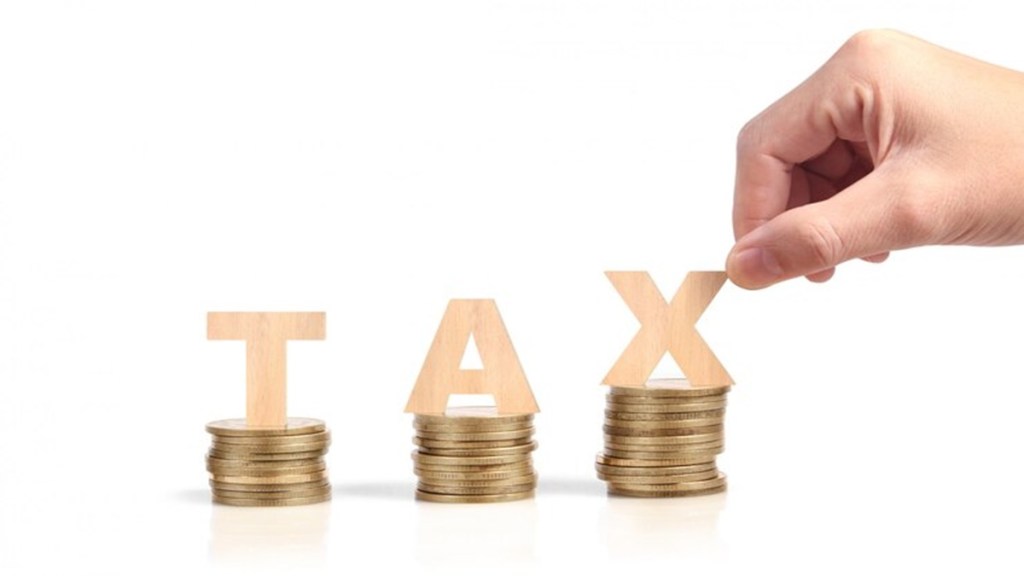Despite the potential revenue loss of Rs 1 lakh crore, due to tweaks in the income tax rate structure, announced by finance minister Nirmala Sitharaman, the tax revenue collections projected for FY26 are still heavily reliant on personal income tax mop-up.
The Budget has projected gross tax revenue (GTR) collections in the next fiscal year to rise 10.8% to Rs 42.7 lakh crore, over the revised estimate (RE) of Rs 38.5 lakh crore in FY25. This would translate to a tax buoyancy of 1.1 in FY26, which is slightly lower than a projected buoyancy of 1.2 for FY25.
The personal income tax (PIT) is projected to rise 14.4% over RE of FY25, and corporate income tax (CIT) 10.4%. In FY25, the PIT growth is seen rising 20.3% on year, and CIT by merely 7.6%. As a percentage of GDP, PIT collections are expected to come in at 4% in FY26, marginally up from 3.9% in FY25.
Collections from customs duty are seen rising only 2.1% , and from excise by 3.9%. A marginal uptick in customs mop-up could largely be attributed to a massive overhaul of basic customs duty rate in the Budget, and decline in prices of major imported commodities, say experts. The reasons for modest projections could largely be due to reduced customs duties on various items, including mobile phones, chargers, and certain critical minerals, to promote local manufacturing and value addition, said Sivakumar Ramjee, executive director-indirect tax , Nangia Andersen. “While these measures aim to strengthen domestic industries, they also led to decreased import duties from these sectors.”
Collections from GST, meanwhile, are seen rising 10.9% in FY26, similar to the growth expected in FY25. “A 10.9% GST growth estimate on a 10.1% nominal GDP expectation seems realistic. The income tax relief is likely to help consumption, but urban wage growth is likely to be moderate in FY26,” said Gaura Sen Gupta, chief economist, IDFC FIRST Bank. In the April-January period of FY25, gross GST collections have grown a little over 9% on year.
In FY25, CIT growth is estimated to increase only 7.6%, as corporate profits have been benign this year. Since 2019-20, corporate tax collections have been lower than PIT due to massive reduction in rates, availability of tax holidays and financial incentives provided by the Centre.
The finance minister has also announced that the new income tax bill will be tabled in Parliament next week, which is expected to simplify compliance, reduce disputes, remove redundant provisions, and ease tax administration. Sandeep Chilana, managing partner, CCLaw, said that businesses and professionals will be watching closely to see how it handles legacy issues like retrospective taxation, complex exemptions, and litigation-heavy provisions. “The success of this reform will depend on how effectively it balances revenue needs with a taxpayer-friendly approach,” he said.
Sitharaman also rationalised TDS/TCS provisions for easing difficulties of taxpayers. The limit for tax deduction on interest for senior citizens is being doubled from the present Rs 50,000 to Rs 1 lakh. Similarly, the annual limit of Rs 2.40 lakh for TDS on rent is being increased to Rs 6 lakh. “This will reduce the number of transactions liable to TDS, thus benefiting small taxpayers receiving small payments,” she said.
The threshold to collect tax at source (TCS) on remittances under the RBI’s liberalised remittance scheme (LRS) is also increased from Rs 7 lakh to Rs 10 lakh, and TCS on remittances for education purposes have been removed, where such remittance is out of a loan taken from a specified financial institution.
Harsh Bhuta, partner, Bhuta Shah and Co., said, “The removal of TCS on educational remittances alleviates financial strain on parents and students, ensuring seamless fund transfers without the hassle of reclaiming tax credits.”
